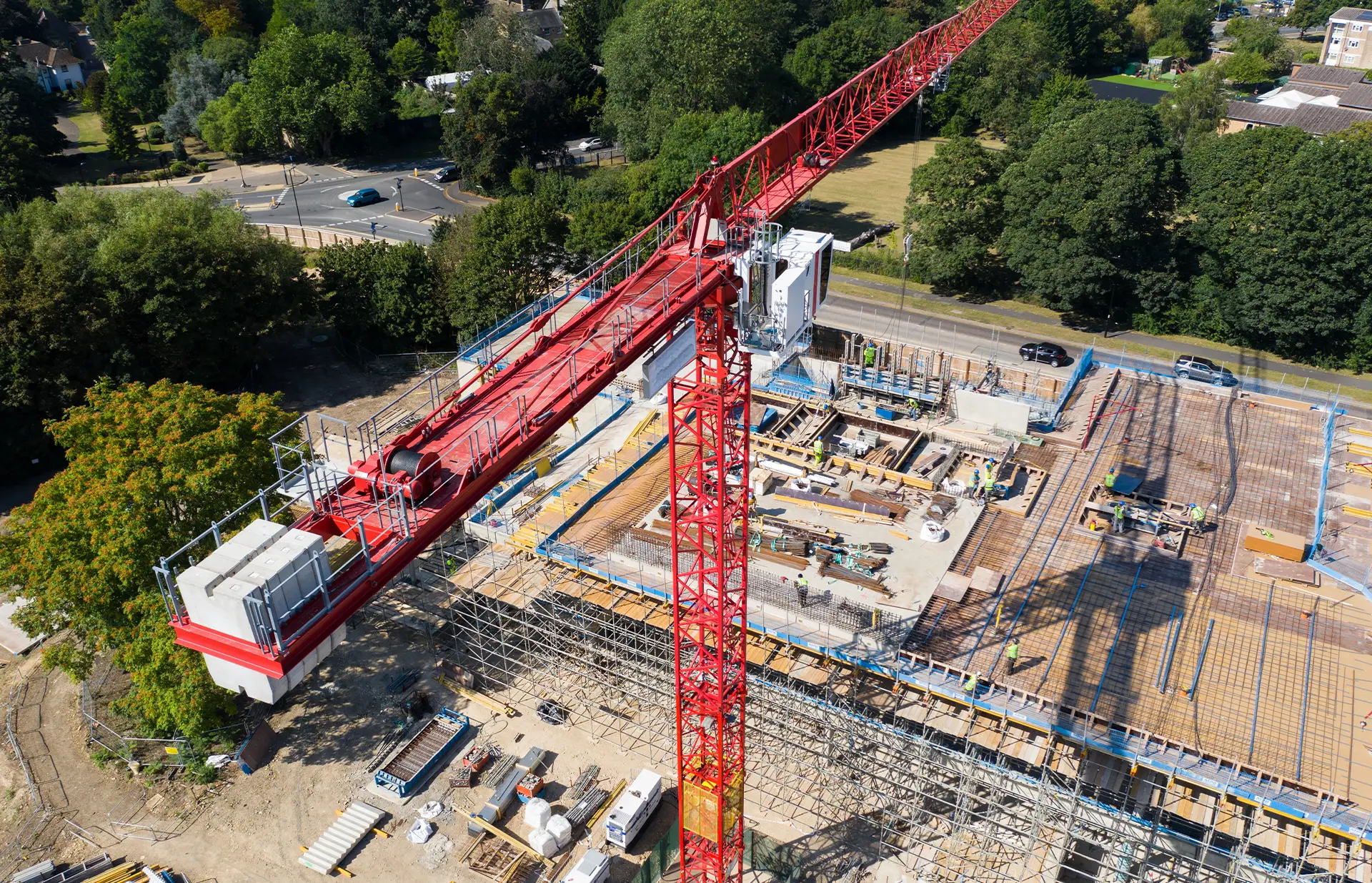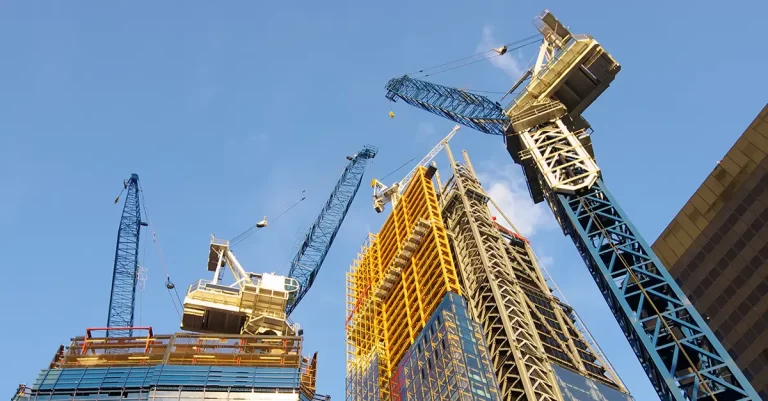What is net zero?
Article
Published on 23/04/2025

1. Introduction
In the context of UK construction, a company is said to have achieved net zero when it has established a balance.
That equality is between the amount of greenhouse gases (GHGs) it emits and the total it offsets or removes from the atmosphere.
We’ll explain offsetting and removal shortly, but first a word of definition about GHGs.
Greenhouse gases are those in the environment that trap heat released from the earth and make the planet warmer. We often hear GHGs described as if they consisted of carbon alone.
This is because most GHGs, including those arising from construction, are in this form. But GHGs technically include gases such as methane and nitrous oxide too.
Sharply increased production of GHGs by humans in recent decades has warmed the earth and created massively enhanced risks of disastrous events occurring. These include:
We’ll explain offsetting and removal shortly, but first a word of definition about GHGs.
Greenhouse gases are those in the environment that trap heat released from the earth and make the planet warmer. We often hear GHGs described as if they consisted of carbon alone.
This is because most GHGs, including those arising from construction, are in this form. But GHGs technically include gases such as methane and nitrous oxide too.
Sharply increased production of GHGs by humans in recent decades has warmed the earth and created massively enhanced risks of disastrous events occurring. These include:
There’s therefore an urgent need for humanity to cut its emissions hugely.
The built environment accounts for about 40 per cent of all GHG emissions, both in the UK and globally. So, there’s clearly a massive onus on the construction sector to play its part in reducing them.
The UK’s goal is for the construction sector to have a net-zero carbon footprint – the total emissions for which it’s responsible -by 2050. This is in line with the country’s broader climate aims. The equivalent date for Scotland alone is 2045.
The UK’s objective is accompanied by an interim target of a 68 per cent reduction in emissions by 2030.
These objectives cover both direct and indirect emissions from construction activities. Direct emissions include those arising from:
The built environment accounts for about 40 per cent of all GHG emissions, both in the UK and globally. So, there’s clearly a massive onus on the construction sector to play its part in reducing them.
The UK’s goal is for the construction sector to have a net-zero carbon footprint – the total emissions for which it’s responsible -by 2050. This is in line with the country’s broader climate aims. The equivalent date for Scotland alone is 2045.
The UK’s objective is accompanied by an interim target of a 68 per cent reduction in emissions by 2030.
These objectives cover both direct and indirect emissions from construction activities. Direct emissions include those arising from:
Indirect emissions embrace those produced by:
Net zero in UK construction is therefore not just about reducing emissions during the building phase. It’s also about ensuring the entire lifecycle of a structure contributes as little as possible to global warming, at stages including:
Let’s break down the key components of net zero in more detail:
2. Carbon emissions in construction
Carbon emissions in construction come from various sources.
They can be broadly categorised into:
Embodied (emissions from carbon embedded in materials)
These are emissions associated with building components:
Significant contributors to embodied emissions include:
Reducing embodied emissions therefore involves choosing low-carbon alternatives, such as:
Construction (emissions during the building of structures)
These are emissions generated by:
Emissions produced at this stage can be optimised by:
Other ways of cutting emissions during this phase can include:
Operational (emissions from the functioning of completed buildings)
These include emissions from energy consumption during the building’s life, to power, for example:
To achieve net zero, buildings must use low-carbon energy sources, such as:
Operational carbon emissions can also be reduced through energy-efficient designs and systems, like:
Passive design considerations can include:
3. Carbon offsetting and sequestration
We mentioned earlier that net zero is reached when a business fully offsets its unavoidable GHG emissions or removes an equivalent amount from the atmosphere.
Ways of achieving this balance include:
Carbon offsetting projects:
The most common way of offsetting a level of emissions is buying the appropriate number of instruments called carbon credits. Each is effectively a permit allowing a business to emit a ton of GHG.
The price the company pays for each credit – in practice a donation – supports a project that protects or enhances the earth.
So, buying credits might see a construction business investing in programmes that absorb carbon elsewhere, such as initiatives delivering:
The price the company pays for each credit – in practice a donation – supports a project that protects or enhances the earth.
So, buying credits might see a construction business investing in programmes that absorb carbon elsewhere, such as initiatives delivering:
Carbon sequestration:
Another route to net zero is carbon sequestration. This is a natural or artificial process by which carbon is captured, removed from the earth’s atmosphere and permanently stored, in solid or liquid form.
In construction, sequestering can happen via building constituents.
For example, bio-based materials absorb carbon during their natural growth phases, which remains locked in once they have become part of buildings. Construction ingredients in this category include:
In construction, sequestering can happen via building constituents.
For example, bio-based materials absorb carbon during their natural growth phases, which remains locked in once they have become part of buildings. Construction ingredients in this category include:
An example of a manufactured sequestering material is Hempcrete, made by mixing hemp shiv, the woody core of the plant, with a lime binder. This is used for purposes such as insulation and walling.
4. Net zero building design principles
Designing buildings that align with net zero principles requires adopting a whole-life approach, which includes both operational and embodied carbon.
Key strategies cover:
Passive design:
Building fabric performance:
A building’s thermal envelope consists of its:
This must be highly efficient, to reduce heat loss or gain and therefore energy needs for warming and cooling. Some features that help are:
Energy use and systems:
Net zero buildings often rely on renewable energy for electricity and heating, via items such as:
Significant roles in reducing energy consumption are also played by:
Building management systems (BMS):
A BMS is a computer-based program that monitors and controls building features, including security and fire systems. It therefore helps maintain comfortable conditions and safety.
But an advanced BMS also allows the real-time monitoring of:
But an advanced BMS also allows the real-time monitoring of:
It can thus help make a building more efficient, by adjusting usage to actual needs.
5. Sustainable materials and construction practices
The choice of materials and the construction process are critical to achieving net zero.
Strategies to reduce embodied carbon and improve sustainability include:
Using low-carbon materials:
Instead of deploying high-carbon ingredients, like steel and cement, using:
Deploying recycled materials
The carbon footprint of a building’s construction phase can also be reduced by incorporating recycled materials, such as:
Adopting circular economy practices:
Embodied carbon can be significantly lowered by emphasising:
Also, designing for deconstruction allows materials to be salvaged and reused in future projects, extending their lifespan and reducing waste.
Improving construction waste management:
A more sustainable, lower-carbon construction industry can be advanced by:
6. Regulations and standards for net zero
To guide, support and monitor progress towards net zero in construction, various standards and frameworks have been developed, including:
UK Government’s 2050 net zero target:
As mentioned earlier, the UK government committed in 2019 to the whole country becoming net zero by 2050. This has significant implications for all industrial sectors, including construction.
The UK Green Building Council (UKGBC) Net Zero Carbon Framework:
This blueprint provides guidance for defining and achieving net zero carbon buildings. It stresses the importance of reducing emissions from both the construction and operational phases and includes strategies for carbon offsetting.
Building Research Establishment Environmental Assessment Method (BREEAM):
BREEAM is a globally recognised sustainability assessment and certification method for buildings throughout their lifecycles. It has net zero as a benchmark for projects and includes criteria for:
The Royal Institution of Chartered Surveyors (RICS) Sustainability and Net Zero Guidelines:
The RICS has outlined a series of best practices and standards for achieving sustainable construction and net zero carbon buildings. These cover:
7. Government and industry collaboration
Achieving net zero in construction requires collaboration across multiple sectors:
Government policies and incentives
These support low-carbon construction through:
Assistance is available for:
Industry innovations
These are driven by advances in features which help optimise design and construction efficiency, such as:
Skills development
This is crucial, as construction industry professionals need to be equipped with the knowledge and skills to implement low-carbon technologies and sustainable practices effectively.
8. Conclusion
Net Zero in UK construction is a holistic, long-term strategy that combines:
The UK construction industry must transition towards these practices to meet the country’s broader climate goals. Doing so will involve significant changes in how buildings are:
Success will require a strong commitment to:



